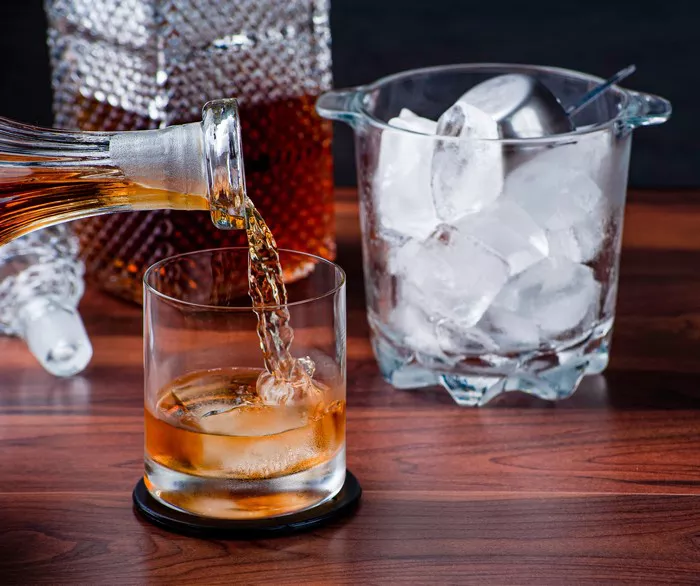Silver rum, often referred to as white or clear rum, is a versatile and beloved spirit with a rich history that spans centuries. Known for its clean and neutral flavor profile, silver rum serves as a foundation for countless cocktails and culinary creations. In this article, we will explore the origins, production methods, flavor characteristics, and diverse applications of silver rum, shedding light on its enduring popularity in the world of distilled spirits.
The Origins of Silver Rum
The roots of silver rum can be traced back to the Caribbean, where sugarcane was cultivated and distilled into a potent spirit by early European settlers. The term “silver rum” refers to the clear and colorless appearance of the unaged spirit. Its history is intertwined with the broader narrative of rum, which played a significant role in the economies and cultures of the Caribbean islands.
As European colonizers established sugarcane plantations across the Caribbean during the 17th and 18th centuries, they quickly recognized the potential for distilling the fermented sugarcane juice, known as molasses, into a fiery spirit. This initial distillation yielded a clear and relatively unaged rum, which would later become known as silver rum.
Production Methods of Silver Rum
Silver rum, like other types of rum, is distilled from sugarcane byproducts such as molasses or sugarcane juice. The production process involves several key steps:
Fermentation: Sugarcane byproducts are fermented with water and yeast to convert the sugars into alcohol. The resulting liquid is known as “wash” or “mash.”
Distillation: The wash is heated in a still, where the alcohol vaporizes and is collected. Silver rum is typically distilled to a high proof, resulting in a clean and neutral spirit.
Aging (Optional): While silver rum is typically unaged, some distillers may choose to briefly age it in wooden barrels to round out the flavor. However, this aging is usually very short, so as not to impart color or heavy flavors.
Filtration: To achieve its clear appearance, silver rum is often filtered to remove any impurities and residues from the distillation process.
Bottling: Once the spirit has been distilled and filtered to the desired quality, it is typically bottled at a relatively high proof, often around 80-90 proof (40-45% alcohol by volume).
Flavor Characteristics of Silver Rum
One of the defining characteristics of silver rum is its clean and neutral flavor profile. Unlike aged rums, which often exhibit complex flavor notes from the wood aging process, silver rum tends to have a more straightforward taste. Key flavor characteristics of silver rum include:
Sweetness: Silver rum is known for its natural sweetness, derived from the sugars in the sugarcane byproducts used in its production. This inherent sweetness makes it an appealing choice for cocktails.
Subtle Floral Notes: Some silver rums may exhibit subtle floral or grassy notes, reminiscent of the sugarcane used in its production.
Mild Fruity Undertones: Depending on the source of the sugarcane and the fermentation process, silver rum may have hints of fruitiness, such as banana or pineapple, though these are typically quite delicate.
Clean and Crisp Finish: Silver rum is prized for its clean and crisp finish, which allows it to blend seamlessly into a wide range of cocktails without overpowering other flavors.
Applications of Silver Rum
Silver rum’s versatility makes it an essential spirit in bars and kitchens worldwide. It serves as a base for many classic cocktails, and its neutral character makes it an ideal canvas for creative mixology. Here are some popular applications of silver rum:
Classic Cocktails: Silver rum is a key ingredient in classic cocktails like the Daiquiri, Mojito, Piña Colada, and the Cuban Libre. Its clean and sweet qualities provide the perfect foundation for these refreshing libations.
Tiki Drinks: Silver rum plays a central role in tiki cocktails, known for their exotic and fruity flavors. It pairs exceptionally well with tropical ingredients like coconut, pineapple, and passion fruit.
Cocktail Mixers: Silver rum is often used in the creation of flavored syrups, cordials, and cocktail mixers, adding a touch of sweetness and depth to these preparations.
Cooking and Baking: Silver rum can be used in culinary applications to impart a subtle sweetness and depth of flavor to dishes like sauces, glazes, and desserts.
Marinades and Grilling: Silver rum makes an excellent component in marinades for meats and seafood, infusing them with a hint of sweetness and complexity. It can also be used in grilling and basting.
Infusions: Some mixologists and home enthusiasts create their own flavored infusions by adding fruits, herbs, or spices to silver rum, allowing for endless experimentation and customization.
Conclusion:
Silver rum, with its clean and neutral character, offers a world of possibilities for mixologists, bartenders, and culinary enthusiasts. Whether shaken into classic cocktails, infused with flavors, or used in cooking and baking, silver rum’s enduring popularity is a testament to its versatility and appeal.


